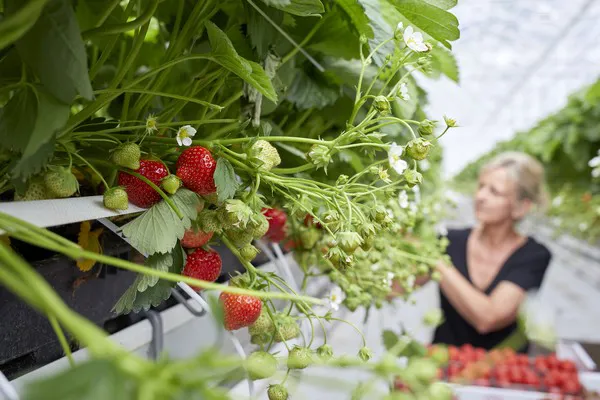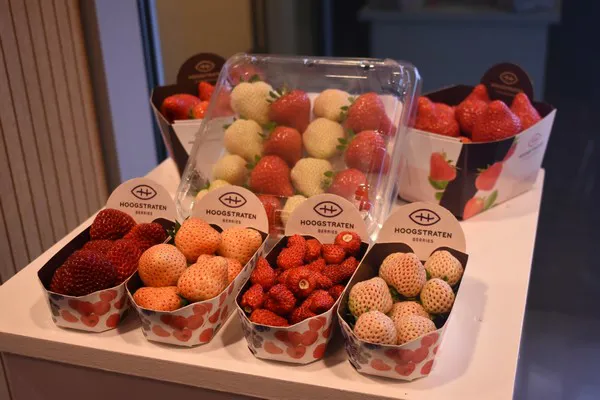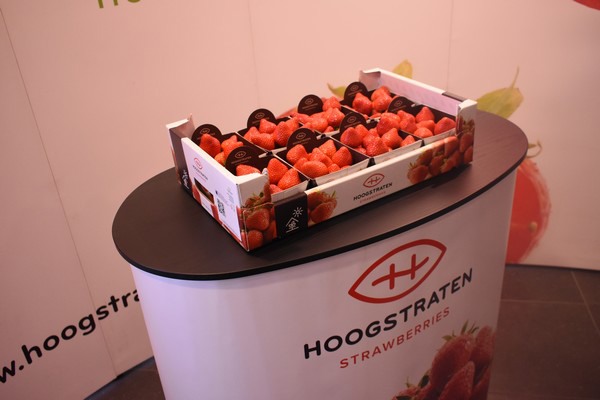Last week marked a supply turnabout in the Dutch and Belgian strawberry markets. "The generally cold nights and low temperatures mean early fall crops are entering their final phase, so volumes are decreasing significantly. That could lead to trade and price pressure in November," begins Michiel Vermeiren of Coöperatie Hoogstraten in Belgium.

That, he says, is mainly because of September's heat wave, which brought fall crops forward. "Supply levels should be decent until late October, but volumes will struggle in November. The hot September caused standard August plantings to move up by weeks, and the warm nights meant the plants couldn't produce their usual kilos. So, September and October volumes are too high, which we'll pay for in November."
"It's a tricky situation because November is usually when the export market can get strawberries from only the Netherlands and Belgium. The UK is a strong demand market in the fall when their own production comes to an end, so they switch entirely to Belgian and Dutch products," says Michiel.
"There are also contracts that must be fulfilled. So, there's quite a lot of demand. But it's not just us having supply problems. I hear from everywhere that it's going to be tough to get volumes. Marketing organizations will have quite some figuring out to do."

It seems there is a switchover now. "Local demand usually declines in September, and October is when the range going to various local retailers truly slows down. But, it's also when demand from abroad begins picking up. Current prices reflect that. Those already rose slightly in the past two weeks, but the big increase will come now. I, thus, expect prices to be high in November because of market shortages," Michiel explains.
Highly weather-dependent market
The cooperative's fickle summer proves that the strawberry market situation never stagnates. "The summer was particularly challenging. That actually started in June with warm, sunny weather. We had promotions at retailers, so prices were especially good in early June. The weather caused plenty of volume at once over the course of that month, which led to big price differences between varieties and growing systems. That was unfortunate, especially for outdoor crops, which had a less-good start after a cold, bleak spring."
"Then, in July, the weather became gloomy and wet. The June heat meant we only got productions that matured quickly, so the summer crops didn't produce the kilos they should have. Some growers had minimal volumes throughout July and August. Those reached very high prices until the second half of August, after which the pricing reversed completely," continues Michiel.

That offers insight into how much the weather affects the strawberry market. "Early August's high prices caused trade to drop off, which quickly put pressure on the price as volumes began to increase. In September, a heat wave followed those challenging summer months. That heat and subsequent rain caused quality issues."
"That brought the fall volumes forward. As a result, there were a lot of simultaneous volumes in September and early October, which didn't help. It's a matter of constantly responding to that. Especially considering September 2022, when the situation was totally opposite," says Vermeiren.
Defence against weather extremes
Much has been written about the climate problems' effects. The challenging summer, however, proved how big an impact weather extremes have on a volatile market like strawberries. "Every year, it's simply a matter of waiting to see what the weather will do. This year showed, once again, that we're at Mother Nature's mercy. That makes sense, of course, because you work with a natural product. Nevertheless, it makes it challenging to always get the best out of the market. That's what Coöperatie Hoogstraten works hard at every day."

The cooperative is, thus, considering different ways to defend itself against weather extremes as best it can. "We do that in various ways. For instance, we're working on a project around harvest forecasting to better keep our finger on the cultivation and harvest prediction pulse. To better match supply and demand, we also talk to several marketing partners to specifically plan actions around strawberries in the weeks when supplies peak," Michiel states.
Variety selection is an important point, too. "With, say, Elsanta, it's tricky to get the needed harvest in the desired sizes. We try to work with our growers to see which varieties are best suited for summer growing methods. That applies to our open-field growers, too."
"There, the weather's whims are felt just that bit harder. Plus, we look at all this together with the Hoogstraten Research Center. That doesn't alter the fact that you'll always be weather-dependent. That won't change. All you can do is consider the best possible ways to prepare," concludes Michiel.
For more information:
Michiel Vermeiren
Coöperatie Hoogstraten
59 Loenhoutseweg
2320, Hoogstraten, BE
Tel.: +32 (0) 334 00 211
Email: info@hoogstraten.eu
www.hoogstraten.eu
